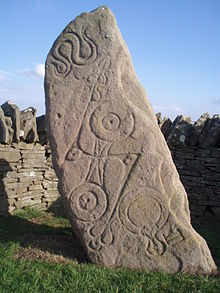So, the Mayans were right about an Apocalypse taking place in 2012. But, it was an apocalypse that saw the emergence of an end to privacy and human dignity via smart phones with front and back cameras. It was not a physical war or apocalypse but more of a social and spiritual one; akin to the first time the European entered the homes and territories of native peoples as if they were to be looked at as a being devoid of any choice as to whether anyone could see them fully clad in their dignity or attire. You have no vote or say in how the technology works or the networked ramifications. The Apocalypse amounts to severe choices and experiences. The apocalypse is not only on your cable box in terms of media content. It is on your telephone. The apocalypse is a cartoon video of a Leader of a nation being sodomized. It is not that the Mayans were wrong about a prophecy but it was just to understand it. The apocalypse is a movie like "Killing them softly" that has one character utter unusual feelings for a Jewish people. The apocalypse is a movie like the "Counselor" that depicts a human being; a woman being disposed as refuse and that also, in the words of one character, threatens creative people regardless of race. The law suits continue. The apocalypse is seen in coffee shops that serve people drano, lysol and disease; not just in ghettos but in relatively well settled and preserved northern states and their suburban town. People are dying in this apocalypse and the war is on to bring salve to the Brit Milah. Some people of Arawak or Mayan extract that is essentially Genghis extract may think it is their job to defend the Mayan people and their prophecy but as the Mayan's pointed out, they did not write it. It was their British Arawak relatives who put it into the Mayan peoples' history; sometime after 1980. This was to ensure that there would not be peace for too long which is the work of a Hobbit hobbling along in his amorphous language and eternal identity struggle and crisis after all. This is the English speaking peoples after all; after all! The issue is that England and the British Isles was always a land of immigrants beside the Troglodytes and the Picts who were on the Islands before the Romans arrived to name the islands Brittania. The Romans and the Normans identified the Picts and the Troglodytes in this Brittania as having a more legitimately emotional connection to the land as an indigenous people. The Picts, from all evidence, are Mongol in ancestry.
https://en.wikipedia.org/wiki/Picts
Picts
From Wikipedia, the free encyclopedia
The
Aberlemno Serpent Stone, Class I Pictish stone with Pictish symbols, showing (top to bottom) the serpent, the
double disc and Z-rod and the mirror and comb
The
Picts were a tribal confederation of peoples who lived in what is today eastern and northern
Scotland during the
Late Iron Age and
Early Medieval periods. They are thought to have been
ethnolinguistically Celtic. Where they lived and what their culture was like can be inferred from the geographical distribution of
brochs,
Brittonic place name elements, and
Pictish stones. Picts are attested to in written records from before the
Roman conquest of Britain to the 10th century, when they are thought to have merged with the
Gaels. They lived to the north of the rivers
Forth and
Clyde, and spoke the now-extinct
Pictish language, which is thought to have been closely related to the Celtic
Brittonic language spoken by the
Britons who lived to the south of them.
[1]
Picts are assumed to have been the descendants of the
Caledonii and other tribes that were mentioned by Roman historians or on the
world map of
Ptolemy. Pictland, also called Pictavia by some sources, gradually merged with the
Gaelic kingdom of
Dál Riata to form the
Kingdom of Alba (Scotland). Alba then expanded, absorbing the Brittonic
kingdom of Strathclyde and Bernician
Lothian, and by the 11th century the Pictish identity had been subsumed into the "
Scots" amalgamation of peoples.
Pictish society was typical of many Iron Age societies in northern
Europe, having "wide connections and parallels" with neighbouring
groups.
[2]
Archaeology gives some impression of the society of the Picts. While
very little in the way of Pictish writing has survived, Pictish history
since the late 6th century is known from a variety of sources, including
Bede's
Historia ecclesiastica gentis Anglorum,
saints' lives such as that of
Columba by
Adomnán, and various
Irish annals.
Contents


No comments:
Post a Comment